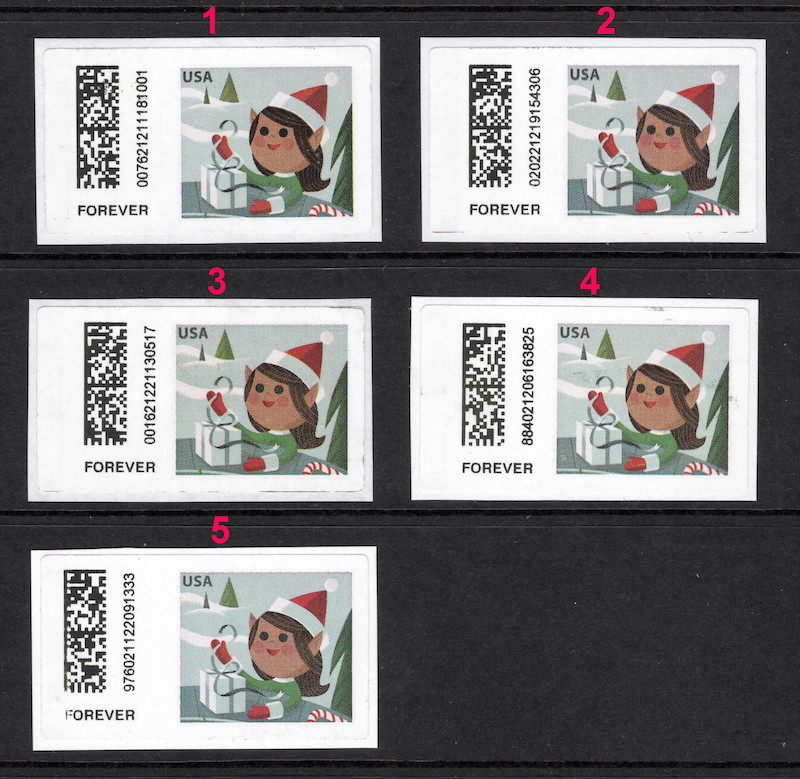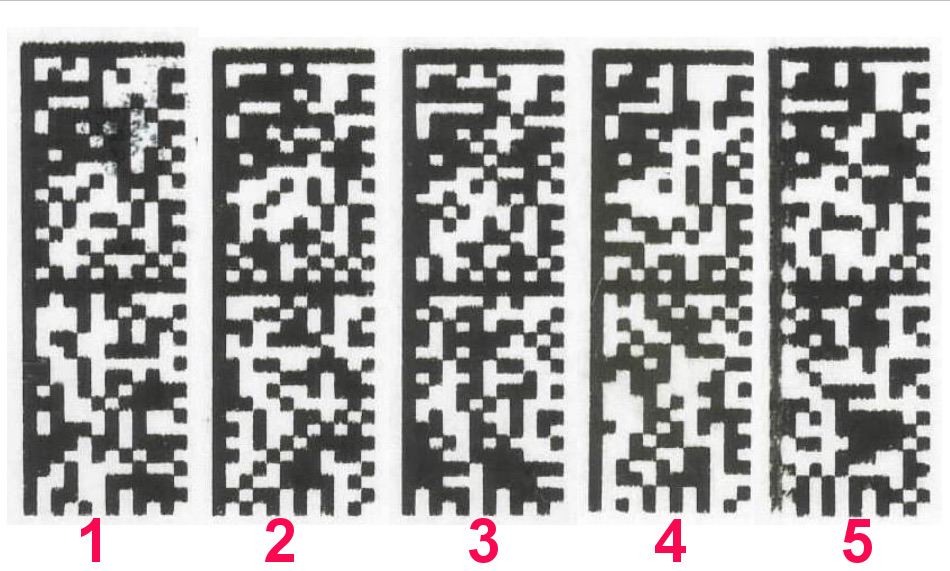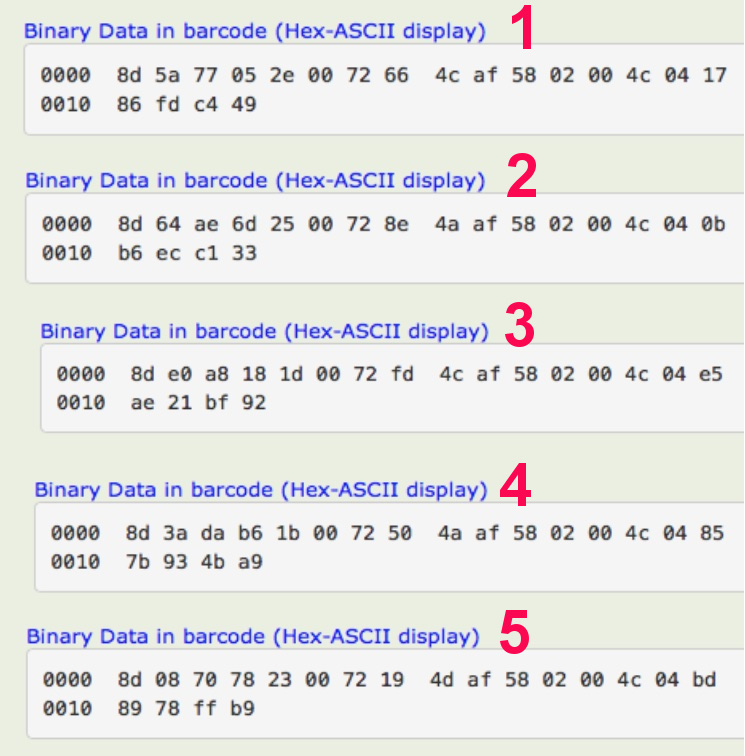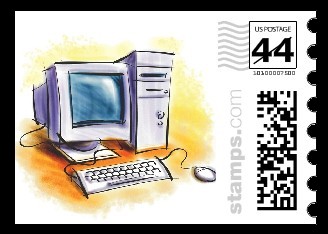 |
Computer Stamp
|
Brief Overview:
PLANET Code Barcode: (PLANET = PostaL Alpha Numeric Encoding Technique) A barcode symbology
used by the USPS to track and confirm the delivery of a mailpiece.
POSTNET Barcode: A barcode symbology used by the USPS to facilitate automated mailpiece sorting and
delivery. It represents numeric ZIP codes, ZIP+4 codes and other delivery point codes. The barcode consists
of a series of tall and short bars that encode the digits of the postal code.
Information Based Indicia: (IBI) A barcode system (W=12 x H=36) developed by the USPS to uniquely
identify and track individual mailpieces. It combines the capabilities of the POSTNET barcode and the
PLANET Code barcode into a single barcode format. The IBI includes routing, tracking and other
information necessary for efficient mail sorting and delivery.
Intelligent Mail Indicia: (IMI) A barcode system (W=16 x H=36) developed by the USPS which includes
the IBI barcode indicating that appropriate postage has been paid along with other information such as
the postage amount, origin and destination addresses. The IMI is typically printed directly on the
mailpiece or on a meter label (aka stamp) affixed to it.
Every "Computer Stamp" (aka Customized Postage Stamp/Personalized Postage Stamp) has an IBI
barcode on its face. The IBI barcode consists of a rectangular digital matrix (W=12 x H=36 )
which converts into a 20 digit analog sequence:
1) 1 digit = Indicia Version
2) 4 digits = Counter #
3) 1 digit = IBI Vendor
4) 3 digits = Vendor Name
5) 3 digits = Specific Value
6) 2 digits = Postage Class
7) 6 digits = Unique HMAC Signature
(Hash-Based Message Authentication Code = a go/no-go, unused/used code - a cryptographic signature)
The above 20 digit analog sequence distinguishes one mailpiece from another, helps with individual tracking
and sorting and can identify the source of the mailpiece.
Below are a few reasons why USPS allowed personalized postage:
A) Customer Engagement: Personalized postage allows individuals and businesses to create customized
stamps featuring their own images, photographs or designs. This engagement opportunity helps to foster a closer
connection between USPS and its customers, as it provides a more personalized and individualized experience.
B) Revenue Generation: Introducing personalized postage opens up a new revenue stream for USPS.
By allowing customers to create custom stamps, USPS can charge a premium for these personalized products,
generating additional income for the postal service.
C) Celebratory and Commemorative Purposes: Personalized postage provides a means for people to
celebrate special occasions, events or milestones. It allows individuals to create stamps with images of their
family, pets, weddings, graduations, anniversaries or other significant moments. It adds a personal touch to
mailings and can serve as a unique way to commemorate important events in people's lives.
D) Marketing and Branding Opportunities: Personalized postage can also be used by businesses as a
marketing tool. Companies can design stamps featuring their logos, products or branding elements, thus
promoting their brand and increasing brand visibility on mailings.
E) Technological Advancements: The availability of digital printing technologies and advancements
in postage stamp production have made it feasible to offer personalized postage on a larger scale. These
technologies enable customers to upload their own images or designs online and have them printed on valid
postage. Personalized postage must still adhere to USPS guidelines and regulations, ensuring that the
custom stamps comply with legal requirements and do not infringe upon copyrights or trademarks.
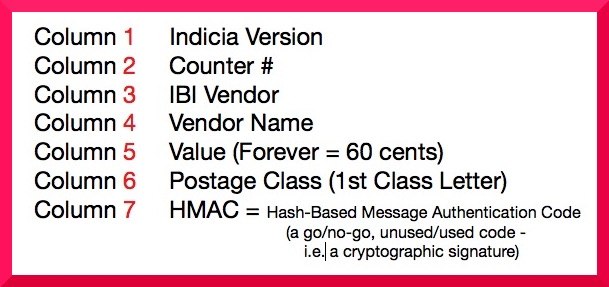


|
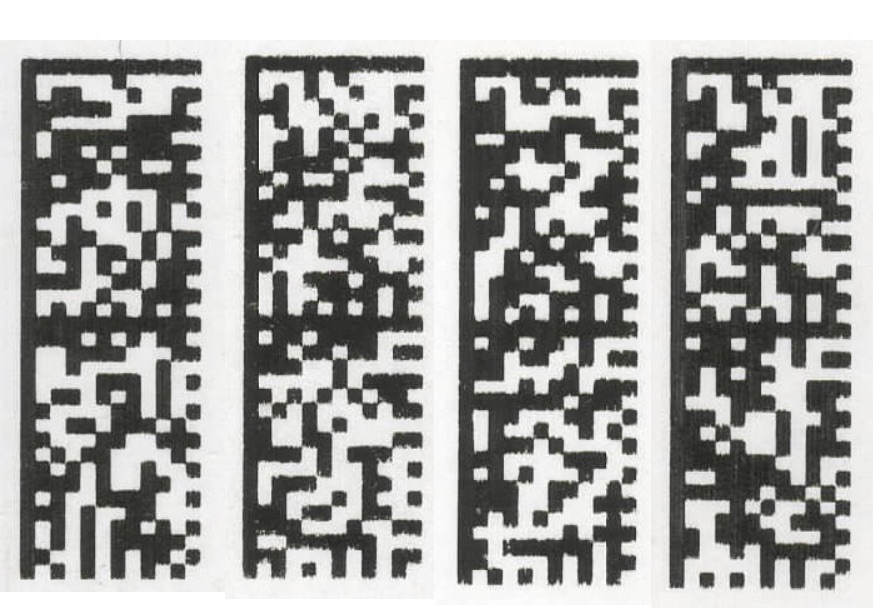
|
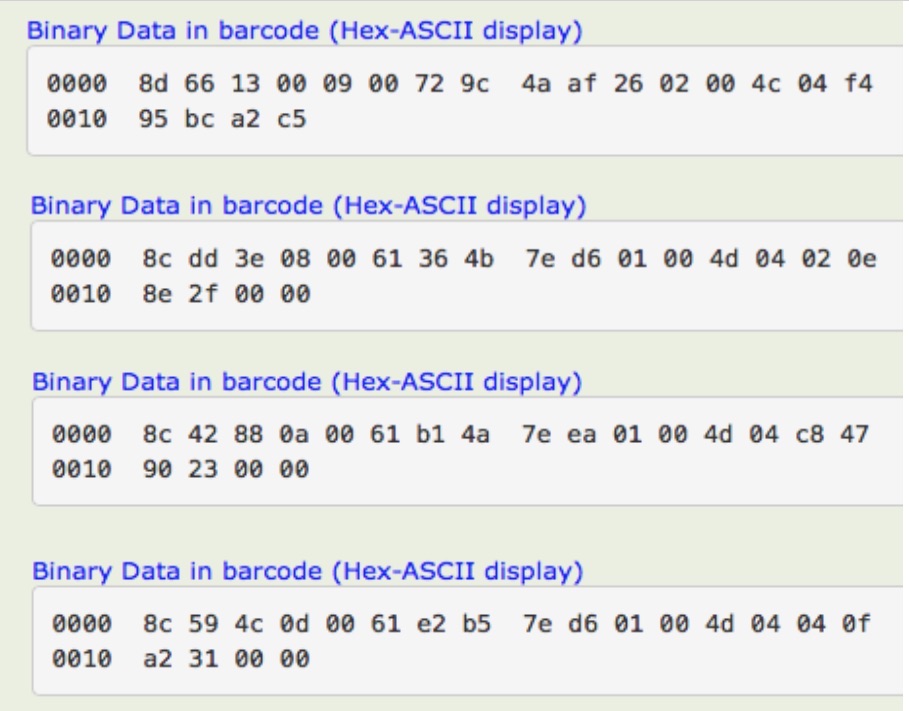

|
1.0 Stamps 2.0 Stamped Stationery 3.0 Precanceled Stamps 4.0 Postage Meters and PC Postage Products (“Postage Evidencing Systems”) 5.0 Permit Imprint (Indicia) 6.0 Payment of Postage 7.0 Computing Postage 8.0 Insufficient or Omitted Postage 9.0 Exchanges and Refunds 10.0 Postage Due Weight Averaging Program ======================================================================================== 4.0 Postage Meters and PC Postage Products (“Postage Evidencing Systems”) 4.1 Basic Information 4.1.1 Definitions Postage meters and PC Postage products are collectively identified as "postage evidencing systems." 4.1.2 Product Categories Product categories include postage meters and PC Postage products. The primary characteristics of postage meters and PC Postage products are described below: a. Postage meters are devices that allow download, storage, and accounting of postage in the device. Meters print indicia that may be IBI or IMI, to indicate postage payment and are digitally generated indicia that include a two-dimensional barcode. IBI are digitally generated indicia that include a two-dimensional barcode. Postage meters are available only through authorized providers. Meters may only be leased or rented and may not be sold or resold. Some components of metering systems may be purchased as authorized by USPS. b. PC Postage products allow customers to purchase and print postage with IBI or IMI indicia directly onto mailpieces, shipping labels, and USPS-approved customized labels. c. USPS-approved commercial providers offer PC Postage products for customers through subscription service agreements. 4.1.3 Authorized Meter Providers The following providers are authorized: DATA-PAC MAILING SYSTEMS CORP 1217 BAY RD WEBSTER NY 14580-1958 800-355-1755 www.data-pac.com FP MAILING SOLUTIONS 140 N MITCHELL CT, STE 200 ADDISON IL 60101-5629 800-341-6052 www.fp-usa.com PITNEY BOWES INC 1 ELMCROFT RD STAMFORD CT 06926-0700 800-322-8000 www.pitneybowes.com QUADIENT INC 478 WHEELERS FARMS RD MILFORD CT 06461 800-624-7892 www.quadient.com 4.1.4 Authorized PC Postage Providers The following providers are authorized: EASYPOST 345 CALIFORNIA ST, 10th FLOOR SAN FRANCISCO CA 94104-2606 415-624-8441 (email preferred – support@easypost.com) www.easypost.com ENDICIA.COM 278 CASTRO ST MOUNTAIN VIEW, CA 94041-1204 800-576-3279 x140 www.endicia.com PITNEY BOWES INC 1 ELMCROFT RD STAMFORD CT 06926-0700 800-322-8000 www.pitneybowes.com STAMPS.COM 1990 E. GRAND AVE EL SEGUNDO CA 90245-5013 888-434-0055 www.stamps.com 4.1.5 Authorized Classes of Mail Mailers may use postage evidencing systems, as provided by standard, to affix or apply indicia on any class of mail except Periodicals and Bound Printed Matter. 4.2 Authorization to Use Postage Evidencing Systems 4.2.1 Customer Agreement Customers must enter into an agreement with USPS for authorization to use postage evidencing systems. By entering into the agreement, the customer accepts responsibility for control and use of the system and agrees to abide by all rules and regulations governing its use. The following conditions apply to these agreements: a. Customers enter into an agreement with USPS (e.g., via electronic click-through or contract signature) in conjunction with executing a separate agreement with the provider for rental, lease, or use of a postage evidencing system. Actual implementation of the agreement with USPS varies by product category and provider and is typically facilitated by the provider on behalf of USPS. Postage evidencing systems are rented or leased. They may not be purchased, sold, or resold. b. A meter lease or rental agreement with an authorized provider is required for postage meter use. Registration with an authorized provider is required for PC Postage system use. c. The customer must provide updated address information to the provider in the event of relocation. d. The customer agrees to make the postage meter available for provider or USPS examination upon request. e. The customer agrees to promptly report a defective meter, or loss or theft of a meter, to the provider. 4.2.2 Authorized Possession Only authorized customers may possess or use postage evidencing systems. Customers must surrender postage evidencing systems to the provider or its agent as follows: a. Upon termination of the lease or rental agreement. b. Upon device malfunction. c. Upon a 30-day notice by the USPS in writing. 4.2.3 Use Outside the United States The director, Commercial Payment (see 608.8.0 for address), must give specific approval to the provider before the provider may place or operate a postage evidencing system for use outside the customs territory of the United States. 4.2.4 Denial of Use The customer authorized to use a postage evidencing system may be denied use when the customer: a. Fails to comply with mailing standards. b. Submits false or incomplete information. c. Enters mailpieces for which there is a postage discrepancy into the mailstream. 4.2.5 Surrender of Postage Evidencing System If authorization to use a Postage Evidencing System is denied, the customer must surrender the systems, upon request, to the service provider, or USPS authorized agent. 4.3 Postage Payment 4.3.1 Paying for Postage The numerical value of postage displayed (in dollars and cents) on each mailpiece must be equal to or greater than the amount due for the applicable price and any extra service fees, or another amount permitted by mailing standards. Authorized USPS payment options vary by provider and product category. 4.3.2 Legibility of Postage Postage indicia must be legible (readable by mail processing equipment) and meet the reflectance measurements in 204.1.3. Illegible or unreadable (unscannable) indicia are not acceptable as payment of postage. The postage amount must be shown in dollars and cents (e.g., $0.49). 4.3.3 Placement of Postage Customers must print or apply indicia in the upper-right corner of the envelope or, if postage is printed on an address label, the upper-right corner of that label. When placing indicia on mailpieces, customers must position indicia at least 1/4 inch from the right edge of the mailpiece and 1/4 inch from the top edge of the mailpiece and as follows: a. Position indicia within the required boundaries. The boundaries of indicia are defined by the right edge of the envelope, the top edge of the envelope, and the bottom edge and the left edge of any USPS-required indicium element printed by the postage evidencing system. b. Maintain the required 1/2-inch clear zone to the left of and below all elements of the indicium, within which nothing must be printed or placed, except for images obtained from a USPS-approved licensed vendor of customized PC Postage. c. An approved indicium must include within its boundaries only postal markings and text required or recommended by USPS, except that the indicium may identify the provider. Other material may be printed only outside the boundaries of the clear zone identified in 4.3.3b. d. Any additional material printed by a postage evidencing system under 4.3.3b and 4.3.3c must comply with the following requirements: 1. The material must be consistent with the Postal Service’s intent to maintain neutrality on religious, social, political, legal, moral, or other public issues. 2. The material must not be obscene, deceptive, or defamatory of any person, entity, or group and must not advocate unlawful action. 3. The material must not emulate any form of valid postage, government, or other official indicia or payment of postage. 4. The material must not harm the public image, reputation, or goodwill of the Postal Service and must not be otherwise derogatory or detrimental to the Postal Service’s interest. e. Do not allow the indicia to infringe on the areas reserved for the FIM, Intelligent Mail barcode, or optical character reader (OCR) clear zone. f. Orient indicia with the longest dimension parallel to the address. g. Single-piece, First-Class Mail letters must contain a mechanism so that the Postal Service can face the mailpiece during automated processing. Acceptable methods for a mailpiece produced by a postage meter or PC Postage system include: 1. Printing postage meter indicia with fluorescent ink approved by the Postal Service. To determine if the Postal Service has approved an ink, send a written request to the director, Commercial Payment (see 608.8.0 for address). 2. Printing a postage meter or PC Postage indicia directly on a label containing fluorescence that has been approved by the Postal Service. To determine if the Postal Service has approved a label, send a written request to the director, Commercial Payment. 3. Printing a FIM D with the indicia or applying the indicia to an envelope containing a preprinted FIM. Position the FIM according to standards in 202.8.0. h. When placing multiple indicia on an envelope (e.g., for redate or postage correction) the indicia must not overlap each other. Overlapping indicia are not acceptable as payment of postage. 4.3.4 Postal Markings Indicia are comprised of human-readable information. Information-based indicia (IBI) and intelligent mail indicia (IMI) also contain machine-readable information that identifies the postage evidencing system, postage payment information, and mail service requested. There are particular data sets associated with different types of indicia, depending on the product and the type of mailing. Indicia may include postal markings related to the class of mail and presort level and an ancillary service endorsement. All words must be legible and in bold capital letters at least 1/4 inch high or 18-point type. See 202.3.0 for standards on markings and 202.4.0 for placing ancillary service endorsements on letter-size mailpieces, flat-size mailpieces, and parcels. 4.3.5 Refund Procedures Refund procedures for unused printed postage, postage purchased but not printed, and postage lost due to postage evidencing system failure varies by product category. See 9.0 for refund procedures. 4.4 Postage Discrepancies 4.4.1 Definitions Mailpieces with a postage discrepancy are those for which the total postage and fees affixed are not equal to the postage required for the applicable price and any extra services fees as determined by current, at the time of mailing, Postal Service prices. Postage discrepancies include no postage paid, or the use of counterfeited, replicated, duplicated, falsified, otherwise modified postage or postage with zero value. 4.4.2 Detection Process for Postage Discrepancies For mailpieces with shortpaid or unpaid postage found in the mailstream, both manual and automated processes are used to detect and verify the discrepancy. Comparisons of the piece characteristics captured within the mail processing network will be matched against the characteristics affirmed by the customer to identify where a potential postage discrepancy exists. 4.4.3 Handling of Mailpieces with Postage Discrepancies For mailpieces with a detected postage discrepancy when postage is due, corrective measures may include one of the following: a. payment adjustment from the customer, facilitated by the PES provider in the amount equivalent to the postage due, described in 4.4.4. b. Returning the mailpiece to the sender. c. Delivering the mailpiece to the addressee and collecting the deficiency as postage due. d. If identified at the time of induction, collecting the postage due from the customer at the retail location. 4.4.4 Notification of Payment Adjustments for Postage Discrepancies and Suspension PC Postage customer discrepancies may be resolved via an automated payment adjustment from the customer when possible which will be reflected in the customer’s account by the PES provider. If an adjustment for the entire postage discrepancy amount is not possible, the customer will be notified by the PES provider to provide funds to resolve the discrepancy within 14 calendar days, or 10 business days if by electronic means, from the date of the notification. The PES provider may be notified to temporarily suspend the customer's ability to print PC Postage under the following circumstances: a. After the 14- or 10-day notification payment period has ended and the customer has not paid the postage due. b. When an electronic notification to the customer is undeliverable. c. Following notification, the customer's cumulative revenue deficiency increases during the 14- or 10-day period due to additional mailpieces being identified as shortpaid or unpaid. d. Suspensions may be reversed and the ability to print PC Postage may be reactivated once the postage discrepancy resulting in the suspension is resolved, or the director, Commercial Payment, provides written approval based on exceptional circumstances. 4.4.5 PC Postage Discrepancies Dispute Process Customers wishing to dispute postage discrepancies must do so electronically through the PES provider within 60 calendar days of either 1) the reflection in the customer’s account of the automated payment adjustment by the PES provider; or 2) the notification by the PES provider to make funding available to resolve identified discrepancies, whichever is applicable. Customers must substantiate that the postage affixed was valid and sufficient for the postage and applicable fees owed. An electronic notification will be sent to the customer of the decision to uphold or deny the dispute along with a brief rationale. The USPS reserves the authority to make the final decision on all disputes. 4.5 Special Indicia 4.5.1 Date and Postage Corrections Mailers may print a date correction or additional postage indicium directly on the mailpiece or on a USPS-approved label under the following conditions: a. A date correction indicium is required for any mailpiece not deposited by the date of mailing in the indicium. Only one date correction indicium is permitted on a mailpiece. For all postage evidencing systems except PC Postage systems, a date correction must show the actual date of deposit and zero postage value ("0.00"). Place the date correction as follows: 1. On letter-size mail, place the date correction on the nonaddress side in the upper right corner or on the address side in the lower left corner. 2. On flat-size mail or parcels, place the date correction next to the original indicium, except when applied by an ink jet printer on barcoded flats. b. Indicia for additional postage on shortpaid mailpieces must equal the total amount of required postage. 4.6 Mailings 4.6.1 Mailing Date Format The mailing date in meter indicia must meet the format standards in this section. The year must be represented by all four digits or by the last two digits. Mailers may print the indicia directly onto mailpieces or onto separate labels or tape affixed to mailpieces. The mailing date format used in the indicia is also subject to the following conditions: a. Complete Date. Mailers must use a complete date for the following: 1. All Priority Mail Express, Priority Mail, First-Class Mail, First-Class Package Service - Retail, and First-Class Package Service - Commercial pieces. 2. All mailpieces with Insured Mail, or COD service. 3. All mailpieces prepared with the indicia printed on nonadhesive paper (e.g., computer printer paper) and affixed to the mailpiece or used as part of an insert in a window envelope. b. Month and Year. Mailers may use a complete date or a mailing date consisting solely of the month and year in the indicia only for USPS Marketing Mail and Package Services pieces. c. No Date. Mailers must use indicia with no mailing date for prepaid metered reply postage. As an option, mailers may use indicia with no mailing date for USPS Marketing Mail and Package Services pieces not subject to 4.6.2a. 4.6.2 Mailing Date Accuracy and Mailing Periods The date or period when mailers may deposit or present metered mail for mailing is controlled by the mailing date in the indicia under the following conditions: a. Complete Date. Mailpieces bearing a complete date in the indicia must be deposited or presented on that date, except for pieces entered after the day's last scheduled collection from the Post Office or collection box. Those may bear the actual date of entry or the date of the next scheduled collection from the Post Office or collection box. When authorized by USPS, presort mail accepted after midnight may bear the previous day's date. If the mailer knows that the mail is not to be deposited or presented on the date in the indicia, the mailer must use a date correction indicium under 4.5.1. b. Month and Year. Mailpieces bearing only the month and year in the indicia may be deposited or presented for mailing on any day during the month shown in the indicia and through the third day of the following month. c. No Date. Mailpieces bearing no date in the indicia may be deposited or presented for mailing on any date. 4.6.3 Deposit of Mail Mailers must deposit or enter mailpieces with metered or PC Postage indicia according to the following conditions: a. Mailers may deposit Priority Mail Express (including Flat Rate), Priority Mail (including Flat Rate), retail First-Class Mail, First-Class Package Service - Retail, First-Class Package Service - Commercial, retail Media Mail, and Library Mail, and USPS Retail Ground with a postage evidencing indicia at any Postal Service facility, preferably near the customer's local Post Office. Zone-priced pieces must have postage affixed to each mailpiece that is calculated to include the amount due as specified in 4.3.1, taking into account the weight and the zone from the ZIP Code of the office where the mailpiece is deposited to the ZIP Code of the destination address. b. Mailers must deposit all presorted price mail at the authorized mailing office. c. Mailers must deposit all mail not specified in 4.6.3a and 4.6.3b at a postal facility within the ZIP Code shown in the indicia. d. Mailers also may dropship metered mail according to the standards in 705.19.0. 4.7 Authorization to Produce and Distribute Postage Evidencing Systems Title 39, Code of Federal Regulations, part 501, contains information concerning authorization to produce and distribute postage evidencing systems. Additional information may be obtained from the director, Commercial Payment (see 608.8.0 for address). |
